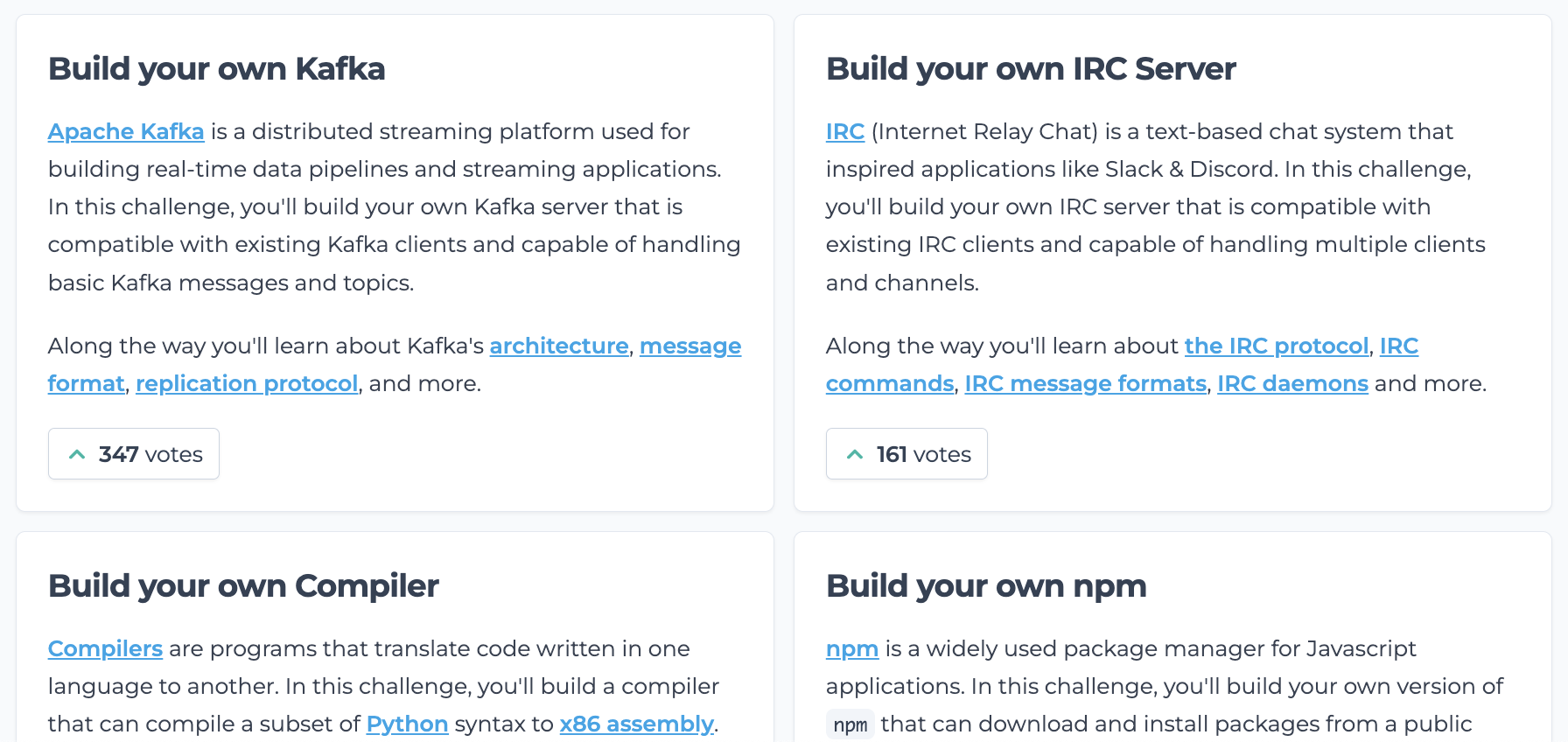Master Python.
Python mastery exercises. Become your team's resident Python expert.
Put your Python skills to the test. Practice by building popular open-source tools from scratch.
A shell is the program that interprets what you type into the terminal. It reads your commands, runs programs, and prints their output. Popular examples are Bash and ZSH.
In this challenge, you'll build your own shell from scratch.
Your shell will run a REPL, parse commands, spawn processes, and more.
Navigation
Quoting
Redirection
Autocompletion
Pipelines
History
History Persistence
Discover concurrent programming in Python while also learning about TCP servers, network programming, and the Redis Protocol.
Lists
Streams
Transactions
Replication
RDB Persistence
Pub/Sub
Sorted Sets
Geospatial Commands
Authentication
Learn about regular expressions and how they're evaluated. Implement your own version of grep in Python.
Printing Matches
Multiple Matches
File Search
Quantifiers
Backreferences
This challenge follows the book Crafting Interpreters by Robert Nystrom.
In this challenge you'll build an interpreter for Lox, a simple scripting language. Along the way, you'll learn about tokenization, ASTs, tree-walk interpreters and more.
Before starting this challenge, make sure you've read the "Welcome" part of the book that contains these chapters:
- Introduction (chapter 1)
- A Map of the Territory (chapter 2)
- The Lox Language (chapter 3)
These chapters don't involve writing code, so they won't be covered in this challenge. This challenge will start from chapter 4, Scanning.
Parsing Expressions
Evaluating Expressions
Statements & State
Control Flow
Functions
Resolving & Binding
Classes
Inheritance
Learn about .torrent files and the famous BitTorrent protocol. Implement your own BitTorrent client in Python.
Magnet Links
Apache Kafka is a distributed event streaming platform often used for high-performance data pipelines. In this challenge, you'll build your own Kafka broker that's capable of serving basic requests.
Along the way you'll learn about TCP servers, the Kafka wire protocol and more.
Concurrent Clients
Listing Partitions
Consuming Messages
Producing Messages
Dive into the internals of Git. Discover how Git stores and moves around data, its transfer protocols, and more. A unique exercise in making network requests with Python.
Learn about B-Trees, the foundation of every relational database. Explore Python's API for reading/writing files, and handling custom file formats.
DNS is a protocol used to resolve domain names to IP addresses. In this challenge, you'll build a DNS server that's capable of responding to basic DNS queries.
Along the way you'll learn about the DNS protocol, DNS packet format, DNS record types, UDP servers and more.
HTTP is the protocol that powers the web. In this challenge, you'll build a HTTP server from scratch using TCP primitives. Your server will be capable of handling simple GET/POST requests, serving files and handling multiple concurrent connections.
Along the way, we'll learn about TCP connections, HTTP headers, HTTP verbs, handling multiple connections and more.
HTTP Compression
Persistent Connections


 Ananthalakshmi Sankar
Automation Engineer at Apple
“
I think the instant feedback right there in the git push is really cool.
Didn't even know that was possible!
Ananthalakshmi Sankar
Automation Engineer at Apple
“
I think the instant feedback right there in the git push is really cool.
Didn't even know that was possible!
 Patrick Burris
Senior Software Developer, CenturyLink
Patrick Burris
Senior Software Developer, CenturyLink